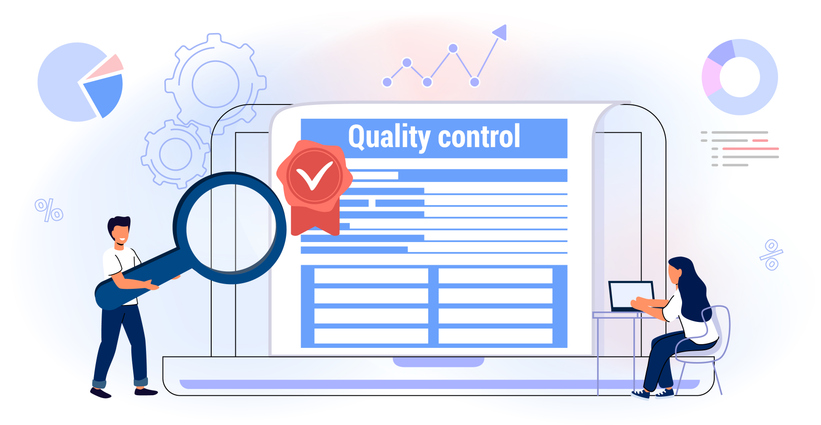
Ensuring Data Quality During Data Migration: Best Practices for Life Sciences
Data migration presents unique challenges for life sciences organizations, requiring meticulous attention to data integrity and regulatory compliance. As a critical infrastructure transformation, successful migration demands precise execution that aligns with industry-specific requirements and validation protocols. Maintaining data migration quality throughout this transition is fundamental to ensuring operational continuity and regulatory adherence when migrating life sciences data.
This article examines proven methodologies and industry-specific best practices that safeguard data integrity during migration, with particular focus on the specialized needs of life sciences organizations managing complex datasets and compliance requirements.
Understanding the Data Migration Process
Migrating data involves moving information from legacy systems to modern platforms while ensuring accuracy, consistency, and usability. This process is vital for life sciences organizations, supporting critical operations, compliance, and innovation.
Let’s break it down.
Key Stages of Data Migration
Migrating data is a multiphase process that requires meticulous planning and execution to ensure success. Each stage is crucial in maintaining data quality and achieving the desired outcomes.
Here’s a closer look at the key stages:
Planning
A well-defined plan is the foundation for successful data migration. This stage involves setting clear project goals, scope, and timelines to align with organizational objectives. Identify key stakeholders early on and establish governance policies to ensure accountability and compliance.
For life sciences companies, this phase may also include defining data standards and identifying regulatory requirements to be addressed during the migration.
Tip: Regular stakeholder meetings during this stage can help clarify expectations and mitigate risks.
Preparation
Organizations must conduct a comprehensive data assessment and inventory before migration begins. This involves auditing existing data sources, evaluating data migration quality, and determining which datasets are most critical for migration. For life sciences organizations, this may include categorizing data from research labs, clinical trials, or patient records. During this phase, it’s essential to address inconsistencies and resolve data quality issues through cleansing and standardization.
Example: A pharmaceutical company might prioritize and define business-critical needs to identify and prioritize key data sources that the commercial team relies on daily (e.g., customer rosters, sales call data, territory assignments, and target lists) and map out the data’s dependencies on existing processes, reports, and systems.
Execution
This stage involves the technical process of extracting data from legacy systems, transforming it to meet the target platform’s structure, and loading it into the new system. Rigorous testing during this phase is critical to catch and resolve errors. This is especially important in life sciences, where data integrity directly impacts operations, regulatory compliance, and patient outcomes.
Pro Tip: Begin with small-scale pilot migrations to test the process before full-scale execution. Meta-data-driven imports help accelerate the migration process.
Validation
This ensures the accuracy, completeness, and usability of migrated data. This stage involves comparing data in the target system to the source to identify and resolve discrepancies. Life sciences organizations must also verify that data relationships—such as patient data linked to clinical trial results—are preserved. Post-migration testing should confirm that the system meets both operational and regulatory requirements.
Recommendation: Conduct user acceptance testing (UAT) to confirm that the migrated data supports real-world workflows.
Getting Started with Data Migration
Before embarking on a data migration project, having a clear roadmap is crucial to guide the process. From assessing your current data landscape to performing post-migration audits, each step requires meticulous planning and execution to ensure success when migrating life sciences data.
Below is a step-by-step guide tailored to the unique needs of life sciences organizations. It is designed to streamline the process and maintain data quality at every stage.
Data Assessment and Quality Analysis
A comprehensive data assessment forms the foundation of any successful data migration process, requiring systematic evaluation of data sources, structures, and dependencies. Life science analytics demands rigorous examination of data migration quality metrics across multiple dimensions, including technical quality parameters and regulatory compliance factors.
Technical Quality Parameters:
- Data completeness and integrity
- Field-level accuracy and validation
- Referential consistency
- Structural compatibility with target schemas
Regulatory Compliance Factors:
- 21 CFR Part 11 compliance requirements
- Data privacy standards (HIPAA, GDPR)
- Audit trail preservation
- Data lineage documentation
The assessment phase must inventory critical data assets, including:
- Clinical trial management systems (CTMS)
- Laboratory information management systems (LIMS)
- Electronic data capture (EDC) platforms
- Pharmacovigilance databases
Pro Tip: Leverage automated data profiling tools integrated with Salesforce to generate comprehensive quality metrics. These analytics provide quantitative insights for prioritizing migration efforts and resource allocation.
Data Cleansing and Standardization
Leverage automated tools to clean and standardize your data. This process involves removing duplicates, correcting inaccuracies, filling gaps, and ensuring consistent formatting and coding across all data sets. For life sciences companies, it’s critical to address variations in data structures that arise from different systems, such as legacy databases or lab systems.
Expert Insight: Establish rules for handling missing data to avoid introducing errors during migration.
Mapping Source Data to Target Fields
Develop a detailed mapping document that identifies how each data element in the source system corresponds to the target system. Include notes on any necessary transformations, such as converting date formats or adjusting units of measurement. This step is essential to maintain data integrity, particularly in life sciences, where clinical, operational, and patient data often have complex relationships.
Example: Map patient data fields such as demographics, diagnoses, and treatment histories to ensure compatibility with the target system’s EMR or CRM modules.
Testing and Validation
Testing is critical for identifying issues early and ensuring a smooth migration. Use sample data to perform initial test runs, validating the ETL process to ensure accurate and complete data transformations.
Gradually expand to full-scale tests and validate migrated data against source systems to identify discrepancies or missing elements. This step must also confirm that data relationships exist for life sciences organizations, such as those linking patient records to trial data.
Pro Tip: Engage end-users in user acceptance testing (UAT) to confirm the data aligns with operational needs and workflows.
Data Loading and Verification
Data migration demands a systematic approach to data loading that preserves referential integrity and complex data relationships. Critical verification protocols include validation of record counts and data completeness, confirmation of parent-child relationships, and authentication of user permissions. Life sciences organizations must maintain precise tracking of data lineage, especially when migrating regulated information such as adverse event reporting or clinical trial data.
Critical verification protocols include:
- Validation of record counts and data completeness across all objects
- Verification of parent-child relationships and lookup fields
- Confirmation of formula field calculations and roll-up summaries
- Authentication of user permissions and sharing rules
Life sciences organizations must maintain precise tracking of data lineage, especially when migrating regulated information such as adverse event reporting or clinical trial data. The verification process should include automated comparison tools that detect discrepancies between source and target systems, ensuring complete data fidelity.
Post-Migration Auditing
Conduct a thorough audit of the migrated data to validate its accuracy, completeness, and usability. Compare the migrated data with the source systems to identify discrepancies and confirm that all critical data has been successfully transferred. In life sciences, this step is vital for meeting regulatory compliance standards and ensuring data is ready for immediate operational use.
Expert Insight: To ensure accuracy, generate reports comparing key metrics (e.g., record counts, field completeness) between the source and target systems. Maintain audit logs for regulatory compliance and future reference.
Best Practices for Ensuring Data Quality
The data migration process demands a comprehensive quality management framework, particularly critical for regulated industries like life sciences where data integrity directly impacts patient outcomes. A qualified managed services partner establishes systematic protocols that ensure data migration quality throughout the transition lifecycle.
Core Quality Assurance Components
- Data Quality Metrics and Standards
- Defined acceptance criteria for completeness (>99.9%)
- Validation rules for field-level integrity
- Cross-object relationship verification protocols
- Real-time quality monitoring dashboards
- Governance Architecture
- Designated quality control teams with defined responsibilities
- Role-based access controls (RBAC) implementation
- Audit trail maintenance procedures
- Compliance documentation workflows
- Technical Quality Controls
- Automated validation scripts
- Delta comparison utilities
- Data profiling tools integration
- Exception handling frameworks
- Validation Methodology
- Multi-phase testing protocols
- Parallel validation environments
- User acceptance testing (UAT) frameworks
- Performance impact assessments
- Documentation Requirements
- Field mapping specifications
- Transformation logic documentation
- Validation test cases and results
- Issue resolution tracking
Pro Tip: Configure Salesforce sandbox environments to mirror production data volumes and complexity, enabling accurate validation of migration scripts and transformation logic before production deployment.
Strategic Solutions for Life Sciences Data Migration Challenges
Migrating life sciences data presents unique complexities, particularly when integrating enterprise data warehousing solutions with existing compliance management frameworks. This section examines critical challenges and their technical resolutions:
Sensitive Patient Data and Compliance
- Challenge: Managing PHI security while maintaining data utility across integrated systems
- Solution: Deploy enterprise-grade encryption protocols, implement role-based access controls, and conduct automated compliance audits with real-time monitoring.
Complex Data Structures
- Challenge: Migrating interconnected research and clinical trial data without compromising relationships
- Solution: Utilize specialized ETL frameworks designed for life sciences data models, with built-in validation for regulatory requirements.
Multiple Legacy Systems
- Challenge: Consolidating disparate data sources while preserving data lineage
- Solution: Implement standardized data models through centralized warehousing architecture, with automated mapping validation.
Global Operations
- Challenge: Maintaining data consistency across international deployments
- Solution: Establish unified global standards with localized compliance rules and automated consistency checks.
Regulatory Compliance
- Challenge: Ensuring continuous compliance throughout the migration lifecycle
- Solution: Deploy validated migration tools with built-in audit trails and automated documentation generation.
Leveraging Technology for Successful Data Migration
Data migration demands sophisticated technological solutions that power modern transformation initiatives. Advanced tool sets and frameworks ensure data integrity while maintaining regulatory compliance throughout each phase:
Essential Technology Components:
Data Quality Assessment Tools
- Automated profiling engines for pre-migration analysis
- Pattern recognition systems for data anomaly detection
- Real-time quality monitoring dashboards
- Compliance validation frameworks
ETL Architectures
- Scalable extraction protocols for legacy systems
- Configurable transformation rule engines
- Automated loading mechanisms with rollback capabilities
- Delta synchronization frameworks
Validation Frameworks
- Automated cross-system reconciliation tools
- Field-level data integrity verification
- Relationship validation utilities
- Performance impact assessment tools
Advanced Analytics Integration
- Machine learning algorithms for pattern detection
- Predictive quality monitoring systems
- Automated error classification
- Intelligent mapping suggestions
Conclusion
Data migration quality is the cornerstone of successful migration in the life sciences industry. Organizations can achieve seamless and compliant data migrations by following best practices, such as establishing clear quality standards, leveraging cutting-edge tools, and addressing unique challenges when migrating life sciences data.
Ready to Ensure a Flawless Data Migration for Your Life Sciences Company?
Don’t let data quality issues compromise your data migration. Our expert team at Conexus specializes in seamless, high-quality data migrations for life sciences companies.






